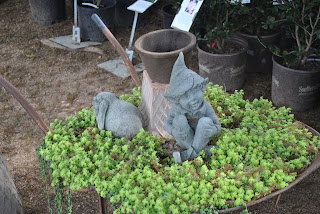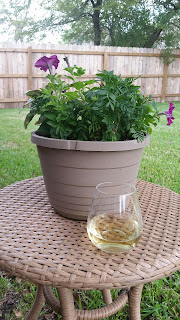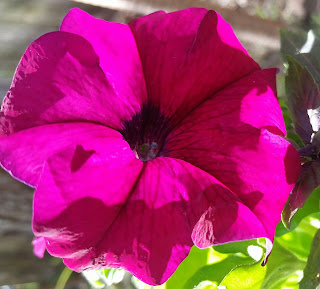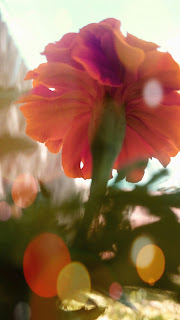I rushed in the door. The meeting was about to start and all the chairs were taken. To the right was a round table with ten chairs; one seat was occupied by a petite woman with short, blond hair. "May I join you?" I asked. " I don't know if there's room," the woman replied smiling. I laughed loudly, sat down, and met one of my very best friends. Good friends share a similar energy and humor, but they also help us be the best versions of ourselves. I recently discovered a parallel in the garden. I jump into new projects head on. When I planned my flower garden, I focused on color and texture, but stumbled onto companion plants.
Companion planting is an established practice in indigenous cultures. In Native American culture, corn beans and squash are a trio called "The Three Sisters."
http://www.heirloom-organics.com/guide/companionplanting.html The corn, like an older sister, holds up and supports the other two plants. The beans easily receive nitrogen from the air and release it to the soil and benefit all the plants. As the beans ramble up from the soil, they create a lattice that holds the three plants close. The prickly squash leaves repel raccoons and provide a deep shade that encourages moist soil and a self mulching process.
https://www.almanac.com/content/three-sisters-corn-bean-and-squash
In the vegetable garden, plants have their favorites. Basil, parsley and parsnips welcome insects like praying mantis and ladybugs. These visitors dine on damaging pests. But it is the beauty and hidden powers of flowering plants that is often underestimated.
Flowers add splashes of color and texture to borders and beds, yet their physical beauty belies secret superpowers. The scent of flowering plants confuses and distracts damaging insects.When you plant the edible nasturtium, it entices aphids away from other more vulnerable plants. Calendula flowers attract hoverflies. Hoverfly larvae eat aphids and dead vegetable matter. A border of perennial flowers lures pests and keeps them from the heart of the garden. Hollyhocks and oregano are just two examples of good border sentries. While these are are all useful companions, the marigold is my favorite.
http://thegrownetwork.com/7-types-of-marigolds-which-one-is-right-for-you/
Marigolds run the gamut from palest yellow to deepest burgundy with striped varieties in- between. As a painter, it was the vivid color and ruffled orb of the marigold that first attracted me. I planted some orange marigolds with deep amethyst petunias, trailing herbs and a shot of purple basil: It was like a painting in a pot.
The roots of the French marigold produce a natural pesticide which repels root knot nematodes. These sinister sounding parasites are microscopic worm-like creatures that cause host plant cells to lump and swell. The scent of marigolds can attract good pollinators, though hybrid varieties are thought to be less effective. Finally, the leaves of the marigold, and the spread of the plant, may help deter weeds.
Plants have their favorite companions. People have their favorite companions. No one ever looked at a plot of dirt and a singular plant and said "That is gorgeous." The beauty of the garden comes from complimentary colors and strengths. I count on my good friends to steer me right and tell me when I am wrong. It's not their exteriors, but their roots, that reveal their beauty. There is a place in the garden, and at the table, for everyone.




















































